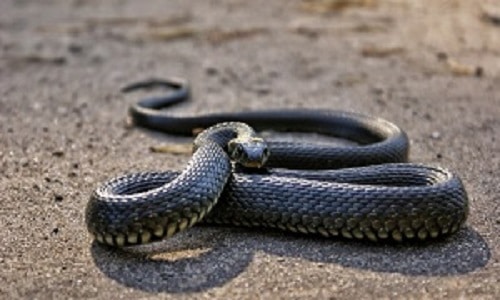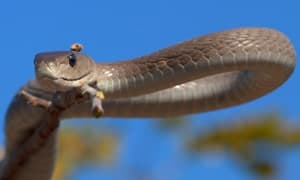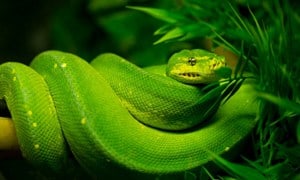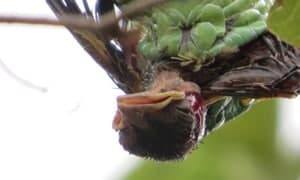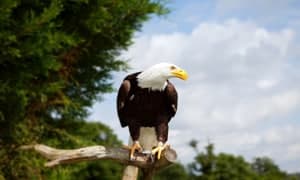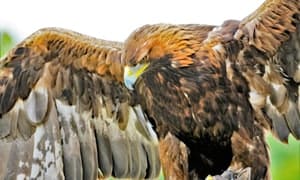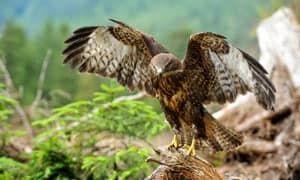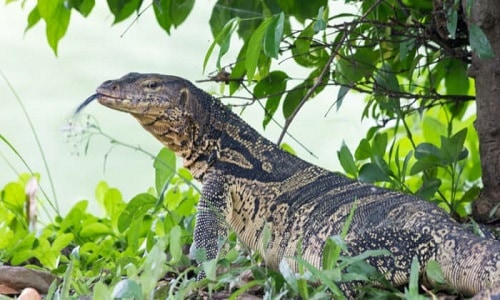If you live in a lightly-wooded area or near a lake or river, you’ve probably spotted a bee-eater bird, perched on a tree. These small and colorful birds are truly a sight to look at.
However, just like any species, these brightly-colored birds have natural enemies. So, what eats bee eater birds? Their most common predators are lizards, snakes, and some large birds such as hawks and falcons.
But before we dig deeper into which animals prey on bee eater birds, let’s first get to know these striking multicolored birds.
Table of Contents
What are Bee Eater Birds?
| Distinctive Features | ● Long and curved beak
● Bright multicolored plumage ● Pointed or rounded wings |
| Length | 7 to 12 inches |
| Weight | 0.5 to 3 ounces |
| Habitat | ● Semi-open woodlands
● Rainforests ● Shrublands ● Sub-deserts |
| Adaptations | ● Their long, curved and sharp beaks allow them to keep a tight grip on their prey.
● Sharp claws help them perch on trees and excavate burrows. ● They use their beak to crush the bee’s or wasp’s stinger to get rid of the venom |
Bee-eater birds belong to the family Meropidae, with at least 30 bee eater species. They are mostly found in Asia and Africa, but some also thrive in Australia, Southern Europe, North America, and New Guinea.
While one might think that they only eat bees and wasps, bee-eater birds also feed on other flying insects such as butterflies, beetles, flies, cicadas, and dragonflies.
One fun fact about bee-eater birds is that they roll in the dirt to avoid external parasites from getting to them.
Bee Eater Birds Predator
1. Snakes
Many snakes are known for attacking bird nests and their young without being detected. Since bee-eater birds are diurnal, snakes take advantage of this and sneak up on them at night when they’re asleep.
However, there are some snakes that also attack adult bee-eaters. In addition to being prey to snakes, they are also rivals in terms of food sources. It’s because snakes also feed on flying insects which are bee eater birds’ main food.
Here are some of the snakes that are detrimental to bee-eater birds.
1. Black Mamba – Black Mamba is a highly venomous snake that is incredibly fast. Due to its speed and its dark color it can easily blend with its surroundings and the prey has no time to prepare when it strikes. No matter how high bee eater birds make their nests, they are not safe with black Mambas as they can easily climb trees.
2. Green Mamba – Green Mamba is also highly venomous and is very agile. One quick move from a Green Mamba and a bee eater bird has no chance of survival. Its venom takes effect easily and will paralyze its prey right away.
3. Boomslang – Another venomous snake that is a great threat to bee eater birds is the Boomslang. While its venom is not that dangerous to humans, it can easily kill a bee eater. They are quick hunters and can move and climb trees without being noticed.
2. Birds of Prey
Birds of prey or raptors are bee eaters’ natural enemies or predators. Since bee eater birds are small in size, these hunting birds can easily catch them with their beaks and talons.
1. Eagle – Eagles are large and powerful birds. Their long and broad wings allow them to fly faster and higher, which makes it easy for them to attack an unsuspecting bee eater bird. Apart from their strong wings, Eagles also have excellent visual acuity. They can see their prey even from a very far distance.
2. Falcons – Bee eater birds are one of Falcons’ favorite treats. Their hooked bills and razor-sharp talons can instantly catch and kill a bee eater bird.
Migration season is when bee eater birds’ lives are most at risk from Falcons, since this is the time when they usually come face-to-face when both birds forage for food.
3. Hawks – Some Hawks are known to be ambush hunters. They will quietly sneak on their prey and wait for the right time to attack to ensure their prey has no chance to escape.
Some Hawks, on the other hand, use their long double-jointed legs and overly long and slim beak to extract their prey from tree holes and crevices.
Both bee eater bird adults and their young will never be safe with these Hawks around.
3. Lizards
Lizards such as Monitor Lizards are also a threat to bee-eater birds’ eggs and chicks. While most of them live on land, some prefer to live in semi-aquatic areas and trees, making them dangerous for bee-eater bird’s nest.
Other animals that eat bee eater birds are dingos, cane toads, and yellow-footed antechinus. However, apart from predators in the wild, humans can also endanger a bee-eater bird’s life.
Human activities such as illegal hunting, deforestation, use of pesticides, and habitat fragmentation significantly affect their food sources and habitat.
Conclusion
While bee eater birds’ population is currently stable, it’s still important to protect them as they help maintain the balance in the ecosystem. Now we know the answer to the question “what eats bee eater birds?” Although there’s nothing much we can do about their predators in the wild, as humans there is so much more we can do.
For instance, increasing public awareness and improving conservation efforts can help lessen the threat in their lives.

George and I became friends after a birdwatching trip with our new group. And we have been enjoying every adventure together. When he told me the idea of establishing a site that shares our experiences and fun, I immediately agreed. After trials and errors, here we have Thayerbirding.




